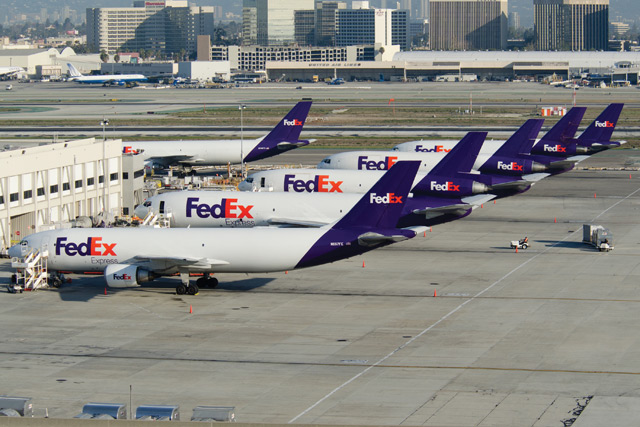Pilot hiring will have to increase significantly soon and - once increased demand kicks in - sustained. That is the verdict of veteran US pilot recruitment consultant Kit Darby, delivered at the Royal Aeronautical Society's Flight Crew Training Conference in late September.
Darby's argument is that all industry forecasts predict air travel to grow globally by about 5% and for the world's fleet to double by 2030. All forecasts also concur that the rate of growth will be slower in mature economies such as North America and Western Europe, but faster in much of the rest of the world, particularly the Asia-Pacific region.
 |
|---|
AirTeamImages FedEx pays the highest wages for pilots in the USA, making it an attractive career destination |
Meanwhile, a number of factors that have slowed airline growth and pilot demand no longer apply, such as raising the commercial pilot compulsory retirement age in many countries from 60 to 65 in 2007. In the USA, it delayed the retirement of about 12,500 experienced pilots, but that period has now ended and those late retirements are beginning. The average airline pilot age among US majors, which was 28 in 1978, was about 37 in 2007, and it shows no signs of coming down.
Looking at the US market, Darby notes that pilot productivity and aircraft utilisation are higher than a decade ago. Although aircraft utilisation is expected to continue to rise during the next 20 years, he says pilot productivity has reached the limit so the number of pilots required per aircraft in an airline's fleet will increase. His pilot productivity argument takes into account not only flying hours (about 85h/month), but duty hours including standby time (170h/month), and the much larger number of hours of time away from home (240-340h/month).
MILITARY SHIFT
Darby says that since 1994, the number of US pilots with entirely civilian training began to exceed those sourced from the military, and that disparity is rising. If the military shrinks and the shift from manned to unmanned aircraft continues, the number of fully trained military pilots with easily transferable qualifications will fall further. And, even in regions with struggling economies such as the eurozone and North America, airline traffic growth has begun to reassert itself. Finally, the depressive effects on air traffic such as 9/11, the Iraq war and fears of a global flu epidemic are history and, unless replaced by something equally dramatic, Darby predicts the return of demand for pilots at a significant rate up to 2030.
Darby has a warning for the US market in particular. At present, he points out, the US commercial aviation market operates 50% of the world's aircraft and accounts for 66% of its pilots, but the US airlines are growing slower than the rest of the world's. Also, demand for US pilots from abroad may increase, which provides competition for US employers.
Meanwhile, the US system for employment of foreigners and the massive difference in the US training philosophy (no ab initio direct to right-hand seat) means it cannot source pilots from abroad like other countries can. In addition, the new Airline Safety Act passed by Congress as a reaction to the revelations from the 2009 Colgan Air crash at Buffalo means pilots need to have a minimum of 1,500h and a full air transport pilot licence (ATPL) to work in either seat of any category of commercial transport aircraft. Instructors of ATPL courses must also have ATPLs. The effect of this is to insert a delay into the US pilot supply chain right at the bottom end.
Darby has also debunked the belief that US career pilots earn less than before. They might struggle to start and might invest more in training, but if they end up with a 30-year job with one of the majors, they have lifetime earnings and pensions comparable to those in the past, he said. While any glamour that is attached to the job tends to be associated with the big long-haul passenger carriers, the highest US payer is FedEx, with Southwest and UPS close behind, making them attractive career destinations.
Source: Flight International























